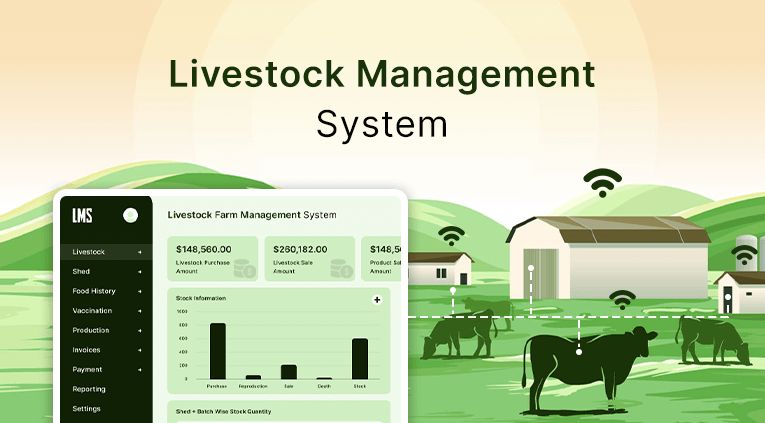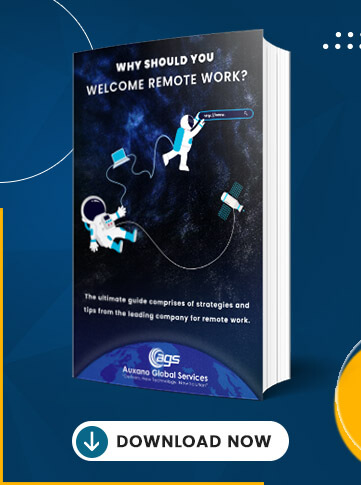Developing software is not a two-step process. Between reporting to the development agency and getting the product, tons of steps go into building the perfect software depending on your requirements. The Software Development Life Cycle (SDLC) is a robust process that caters to your specifications, quality control, testing, designing, and everything you can consider. As a customer, it’s essential to know about these measures in detail to estimate the time taken to create your tech product.
When you approach a Bespoke software development agency, they ask you a few questions. Behind the scenes, they make efforts to create a blueprint that merges your specifications and latest features. It’s a massive process that every stakeholder should know, including the customers.
This article is all about the software development process! The entire SDLC has multiple steps. Although the fundamental essence of the SDLC is the same everywhere, you can observe minor differences depending upon the specific software project. Many of you might not have any idea of the laborious process. So, we will discuss all phases of the software development process by keeping absolute beginners in mind.
Before getting into the hard chunk, let’s walk through some eye-popping statistics and facts related to the software development process.
- Nearly 66% of software projects fail due to an improper SDLC.
- Requirement gathering and analysis is the most crucial step in the software development process.
- Around 60% of companies generated higher profits after adopting an agile mindset.
These numbers are fiery. Aren’t they?
Now, you are good to go to the deeper details of the software development process. It’s time to dive into the article and discuss the subtle aspects of the software development lifecycle. So, without further ado, let’s jump into the article and take a closer look at the software development process.
Stay tuned!
Meaning of software development process
The software development process refers to a well-laid framework through which developers produce the required product.
It starts by gathering requirements from the customers and documenting the specifications. Once it’s done, the technology team builds a design that helps layout the requirements in a tangible manner. Furthermore, the developers focus on merging the required technology stack into the product and programming.
Meanwhile, many developers create a prototype to showcase it to their customers. Also, they gather continuous feedback from the customers and improve the software product from time to time.
Each stage in the software development process produces deliverables that act as inputs for the following phase. So, it streamlines the complex procedure to deliver more productive outcomes aligned with customer requirements within the given timeline.
We will go through these steps and more details of SDLC right below. So, let’s gear up and understand the perks developers get by following an organized software development process.
Benefits of a software development lifecycle
You might be wondering about the reason behind developers following a thoughtful software development process. Below is a deep dive into the perks of following a well-laid software development life cycle.
Let’s begin!
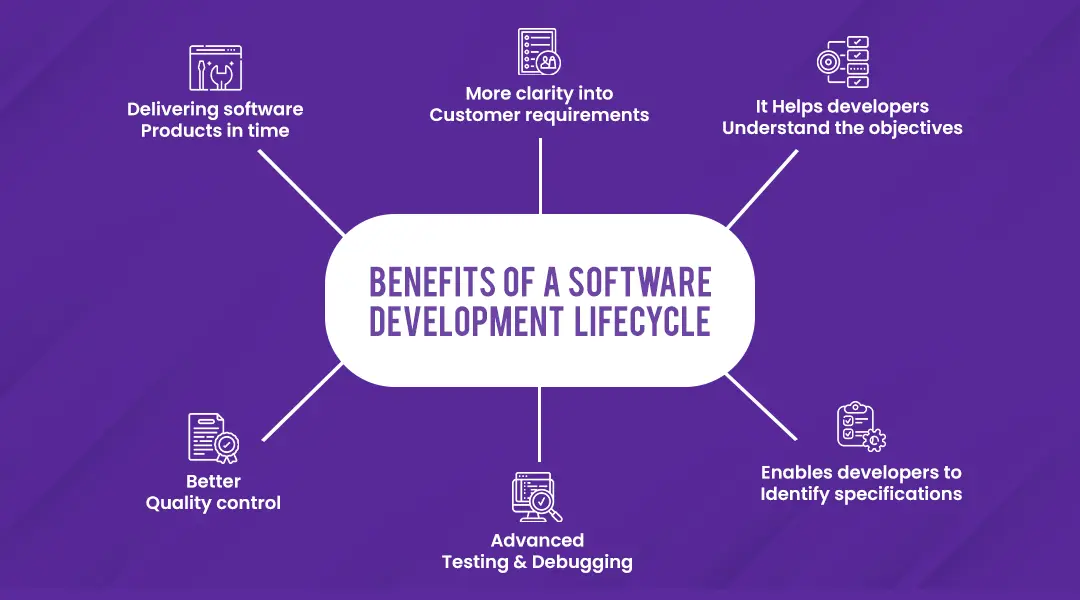
1. More clarity into customer requirements
When developing a software project for customers, it’s better to start backward. A process that starts from understanding the customer profile and their requirements, and goes back into gathering the required tech stacks.
It helps developers understand customer demands and craft a solution that covers all aspects of their requirements. So, a customer-focussed company can benefit from such a requirements-driven process and drive better products in the given timeframe.
2. It Helps developers understand the objectives
Recognizing the end goals of every software project is a challenge for developers. However, a well-laid software development life cycle provides developers a unique perspective to identify the objectives behind every software process. Once they are well aware of why they are developing a specific software product, they can better serve the customers.
So, it’s essential to follow an SDLC for developers to realize the project objectives clearly.
3. Enables developers to identify specifications
Requirements and specifications are different. The first one is the customer needs to cite before the developers. However, specifications are product features that help developers meet customer requirements precisely.
Generally, developers spend hours identifying all product specifications that help them catch up with the customer requirements. A proper software development process helps developers identify all specifications that cover customer requirements closely.
4. Advanced testing and debugging
Do you know? Product testing and debugging are challenging processes. Developers and testers spend hours diagnosing errors and removing them before product delivery.
However, a software development process enables them to test products and debug them from time to time. So, they keep the software error-free at all phases, leading to refined products with minimal errors at the time of delivery. It benefits developers and customers, after all.
5. Better quality control
Developing software is not a challenge. Building a high-quality software project is the deal. Although developers strive hard to develop premium software products, they cannot maintain quality without following a qualified software development process.
Developers need to adhere to a software development lifecycle. It helps them test the product, get customer feedback, and improve the software project from time to time. Overall, developers can control the product quality across all SDLC phases.
6. Delivering software products in time
An improper software development process creates deviations from the expected outcomes. Also, it makes the product error-prone and buggy. Following a software development process helps developers create error-free products in a short span.
So, the developers don’t need excess time debugging the product. Thus, you can expect to get the software project with minimal delays and bugs.

As you saw, the software development process is a boon to developers and customers. So, it’s better to collaborate with a Bespoke Software development company complying with a proper software development lifecycle.
Let’s move on to the more subtle aspects of the software development lifecycle right below.
Software development life cycle – the steps involved
As already mentioned, software development is a multistep process. Since you are up to the mark with all software development aspects, it’s the best time to understand the steps involved in the complicated process.
We will walk you through all steps in detail with a simple explanation. Let’s get started!
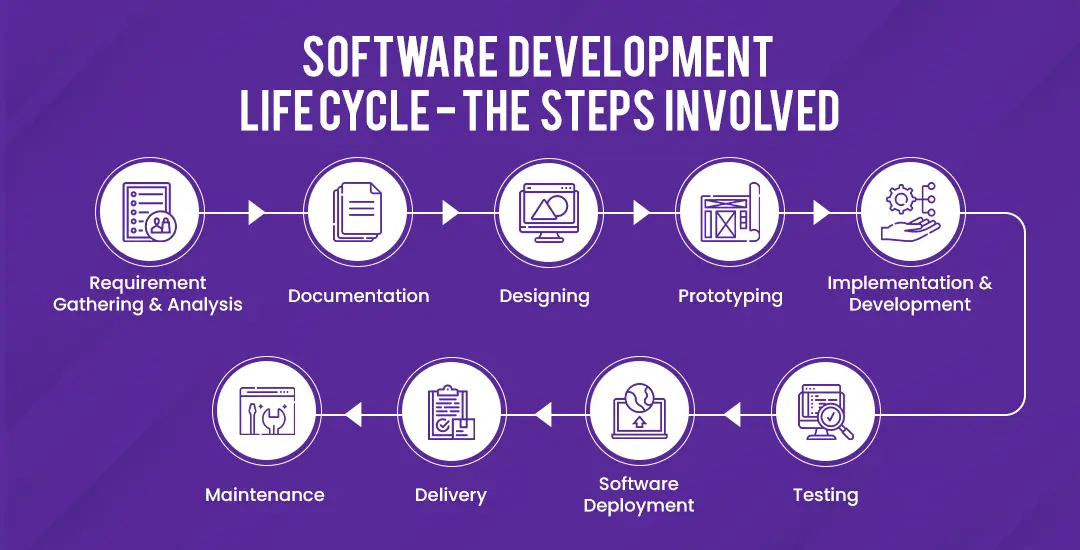
1. Requirement gathering and analysis
The first checkpoint of any software development process is gathering requirements and analyzing them. Developers talk to the customers and ask questions to understand business needs before stepping into the formal development process.
This step helps developers understand the needs and objectives a software project can have. So, they are more focused after completing this phase.
2. Documentation
The upcoming step in a software development process is formal requirement documentation. It helps software developers refer to the customer requirements and align with the objectives at any point in time.
It works as a concrete reference for developers and designers to craft the product according to customer requirements at all phases.
3. Designing
Once the requirements are clear, software designers come into action. They are the leading professionals creating an appropriate software design that will contain all requirements in a navigable fashion.
So, the software development companies focus on designing right after the requirement analysis. It helps them curate further steps without hassles.
4. Prototyping
Many companies create dummy software before creating a full-fledged version. These prototypes help non-technical customers understand how the final product will appear.
So, they can give feedback to the developers and designers well ahead of time. It provides them with a unique opportunity to minimize their efforts when aligning the software with customer requirements at a later stage.
5. Implementation and development
Now, it’s time to build the product from scratch according to the product design. The programmers become active and leverage the required features into your products.
It’s time when developers to implement the required tech stack in software to bring the expected specifications to the table. So, it’s a vital step in the software development lifecycle.
6. Testing
A software project cannot go anywhere with bugs and errors. No matter how excellent the design is, a software program cannot become excellent without proper testing and debugging.
So, software developers and testers focus on removing the concerns in a software program after implementing the code properly. The debug the product and subject it to simulated environments to diagnose all errors in time.
Also read:- What’s The Role Of Security Testing In Software Development?
7. Software deployment
Finally, when the testers give a green signal to the software product, they focus on deploying it in the customer environment. Also, they make changes and migrations when needed.
Furthermore, software developers can bring out successful integrations of third-party applications inside the software program for a holistic perspective.
8. Delivery
The better-than-expected product becomes ready by now. It’s all set to get rolled out in the market and help customers fulfill their objectives. Since the product has no glitches, it will excellently perform under stretched environments.
9. Maintenance
It’s not over yet! After development and deployment, the responsibilities of the development agencies aren’t over yet. They should focus on maintaining the product from upcoming glitches to ensure a consistent user experience.
So, maintenance is a crucial process after product delivery in the software development life cycle.

Hopefully, the software development phases are clear to you. Let’s move on to another crucial aspect of software development right below.
Top software development approaches you should know
Although the above steps are similar across all processes, some variations occur at the approaching level. So, it’s essential to wind our discussion by walking through the common SDLC approaches developers follow.
Let’s dive in!
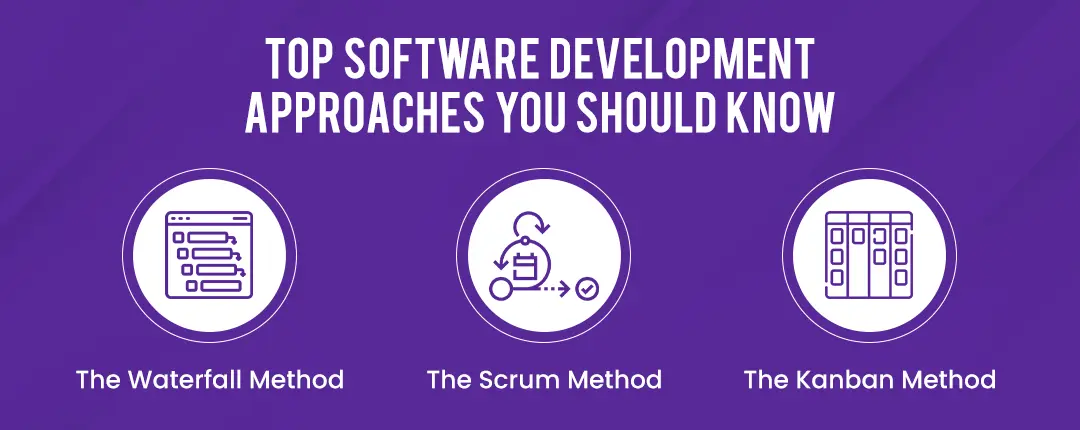
1. The Waterfall method
It’s one of the most primitive software development methods out there. It’s an approach where Bespoke software developers follow all steps in the software development life cycle sequentially.
2. The Scrum method
A scrum is a popular approach among software developers. The professionals divide the entire project into small sprints and consider feedback from customers once finishing a sprint.
3. The Kanban method
It’s an advanced approach where your project sprints move from one column to another with a limited number of tasks with each pass.
Phew! That’s overwhelming. But, these steps and approaches are the essence of building proper software projects in a short span.

How can Auxano Global Services help you?
Now, you might be seeking a company that fulfills all the above requirements on your behalf. Auxano Global Services is one of the Best SDLC-aligned company.
Our Software development team believes in methodical development and follows the above steps and mindsets closely.
We follow an agile approach with frequent feedback to ensure your products remain aligned with your requirements at all times. Our core responsibility is to curate products that remain debugged and glitch-free for the longest tenure. We can create software products with optimum technical backend and aligned to your required specifications.
Conclusion
The software development process is the backbone behind successful technical projects. So, it’s best to collaborate with companies following a well-laid SDLC like Auxano Global Services. Do you want us to manage your software development projects? Give us a call now!
Frequently Asked Questions
-
1. What is a software development lifecycle?
The software passes through several processes during development. These steps fall under a comprehensive software development lifecycle. From requirement gathering to software development, testing, integration, and maintenance, all steps are collectively called a software development lifecycle.
-
2. What are the benefits of a software development process?
Following a software development process helps developers understand the requirements and objectives in greater detail. It assists the software developers to choose the best technology stack to bring out the expected product design and specifications in the given timeframe.
-
3. What are the various SDLC approaches?
The popular SDLC approaches are waterfall, scrum, and Kanban models. They are popular worldwide so numerous software development companies follow them.
-
4. What are the steps in the software development lifecycle?
The steps in a software development life cycle are requirement gathering and analysis, documentation, designing, prototyping, development, testing, integration, delivery, and maintenance.
-
5. Does Auxano Global Services follow a software development lifecycle?
Yes, Auxano Global Services follows a well-laid software development lifecycle. Having years of experience in the industry, we understand the benefits and merits of following a comprehensive software development lifecycle. Our software development team can understand your specific requirements and develop standard and quality-regulated solutions in a given timeframe. Besides, we have a competitive price point that makes software solutions reliable and comfortable for you. Contact us Now!

![Software Development Process: Everything You Need to Know [2022]](https://www.auxanoglobalservices.com/agsresources/wp-content/uploads/2022/05/Software-Development-Process-Everything-You-Need-to-Know-2022.webp)


